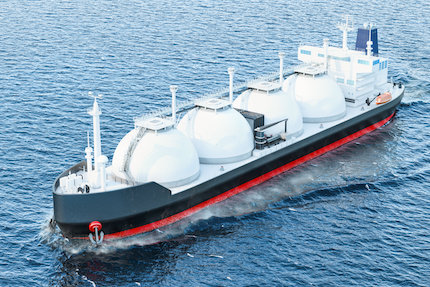The United States is expected to become the world’s largest exporter of liquified natural gas (LNG) in 2023.
Last year was a record for long-term contracts signed by U.S. LNG exporters, with agreements for 65 million metric tons per year in exports—more than triple the 2021 amount!
The U.S. has the capacity to export about 110 million tons of LNG a year, and projects currently under construction are set to cement its status as the world’s biggest exporter, with about 140 million tons of capacity by 2025.
And there is much more to come. According to an analysis by the highly respected energy consultancy Wood Mackenzie, there’s more than $100 billion in spending on new U.S. LNG projects in the pipeline for the next five years.
And there’s one stock set to win big from this LNG craze…

The reason is straightforward: despite the growth in LNG supply, the global market will remain tight through to the end of 2030 as demand in Asia and Europe for the fuel continues to increase. This coming flood of investment will help drive U.S. LNG production to more than 280 million metric tons per year by the end of the decade, more than triple its current capacity and well ahead of the second-place LNG exporter, Qatar.
However, while demand for LNG is strong, inflation and competition among LNG project developers to keep prices low are squeezing returns. Project costs in the Gulf Coast are up 20% compared with the past five years, according to Wood Mackenzie.
Nevertheless, the largest U.S. LNG exporter remains quite bullish.
A Major Player Is Expanding
Cheniere Energy Inc. (LNG) is planning a major expansion at its flagship terminal on the Louisiana coast, as it aims to capitalize on surging overseas energy demand after Russia’s invasion of Ukraine.
On a call with investors, the company’s chief commercial officer Anatol Feygin said: “The need for further investment in LNG capacity was again laid bare last year. Over the next few decades, both the supply and demand side trends are supportive of new liquefaction infrastructure.”
That’s why, on February 23, the company said that it would launch the permitting process to add 20 million tons per year of gas export capacity at its Sabine Pass LNG plant—a 74% expansion from the facility’s current capacity of 27 million tons. Cheniere pioneered overseas sales of U.S. LNG when it began exports from this facility in 2016.
The company did not provide cost estimates for the project, but at current construction rates it would likely be at least $10 billion. Cheniere says it hopes to start exporting from the new facilities by the end of the decade.
There is one definite plus with regard to the cost of this project: instead of starting from scratch, Cheniere is adding capacity to an existing plant, which will give it a cost advantage over other competing projects.
At $600 to $700 per ton for incremental capacity expansion projects, Cheniere has some of the lowest-cost LNG projects on the global cost curve and is well below the U.S. average of $800 per ton.
Cheniere’s expansion plans make sense. The company already has about three million tons of capacity under contract beyond its existing capacity and current construction plans, and more deals are close to being announced. Expansion seems like an easy decision.
Cheniere Energy Is Cheap
Shares of Cheniere Energy have dropped by roughly 15% since early November (its 52-week high was $182.35), and now offer investors a compelling valuation.
The recent decline stems from lower natural gas prices— approximately in the $18/MMBtu (metric million British thermal unit) range for the front-month contract in Europe and Asia. This still compares quite nicely with the U.S. Henry Hub benchmark $2.60/MMBtu range, and should still make LNG exports quite profitable.
That fall in natural gas prices is the reason why Cheniere shares are being valued at more than 30% below the historical forward average, which strikes me as excessive. Keep in mind that Cheniere’s contracts are very strong, with no price reopeners, no linkage to oil prices, and flexibility on delivery points.
Here is what Morningstar analyst Stephen Ellis wrote: “We think Cheniere Energy and Cheniere Partners have wide moats due to an intangibles moat source. The intangibles moat source is derived primarily from the 20-year take-or-pay contracts that both entities have signed with multiple customers to liquefy natural gas that essentially put Cheniere in an incredibly strong competitive position as a pure toll-taker with no commodity price risk.”
Add it all up and Cheniere stock is a bargain, as Wall Street continues to sell energy stocks. It’s a buy in the $150 to $160 range.





